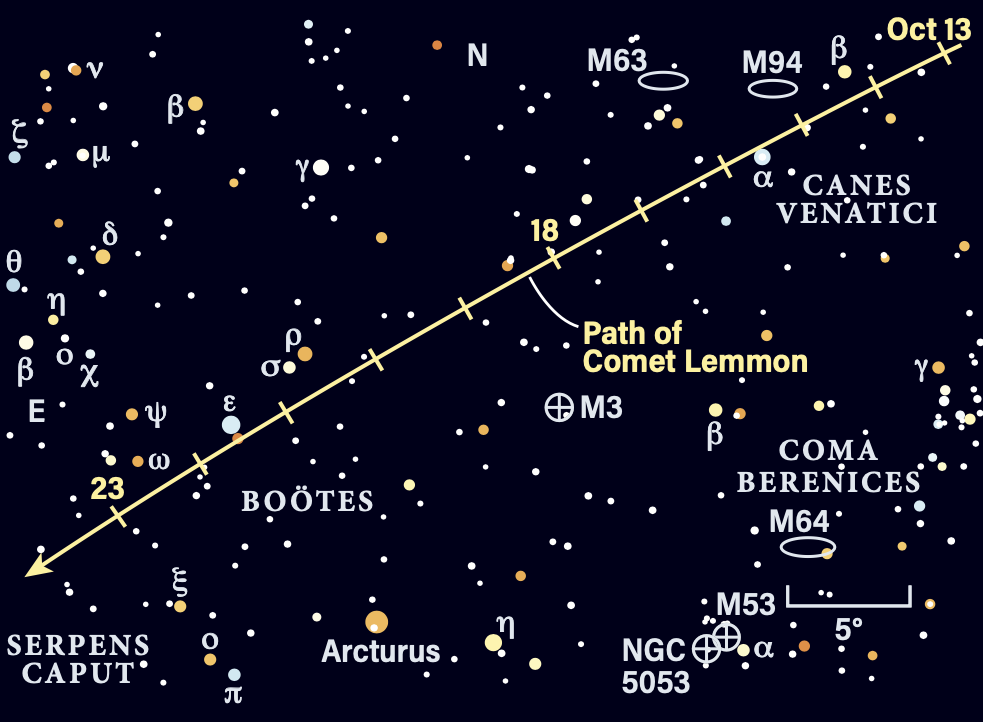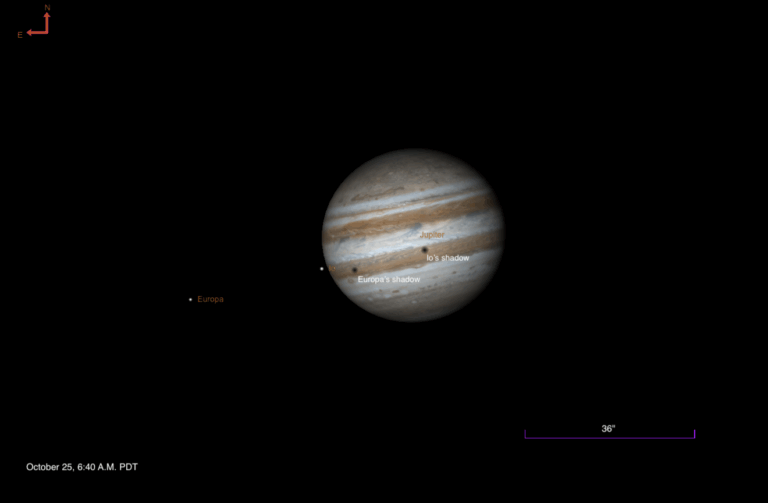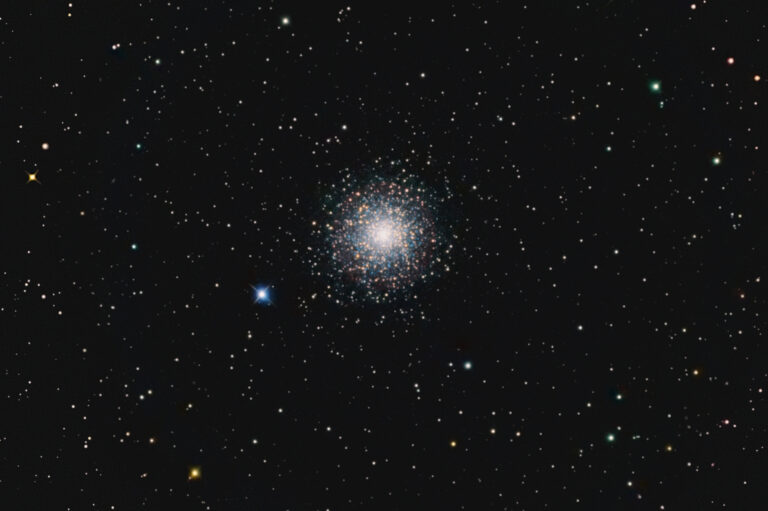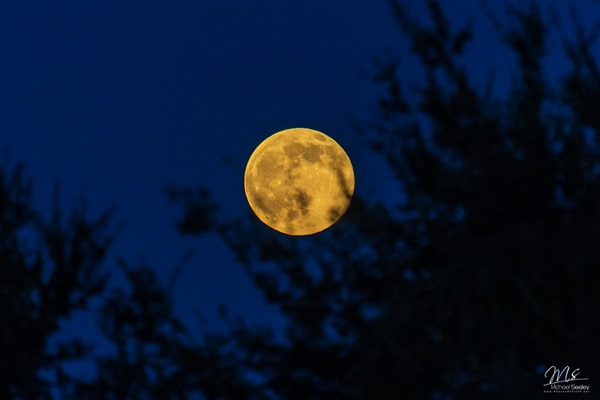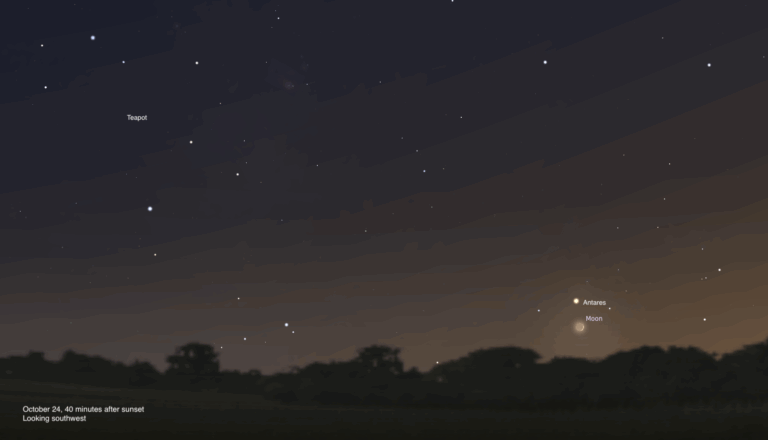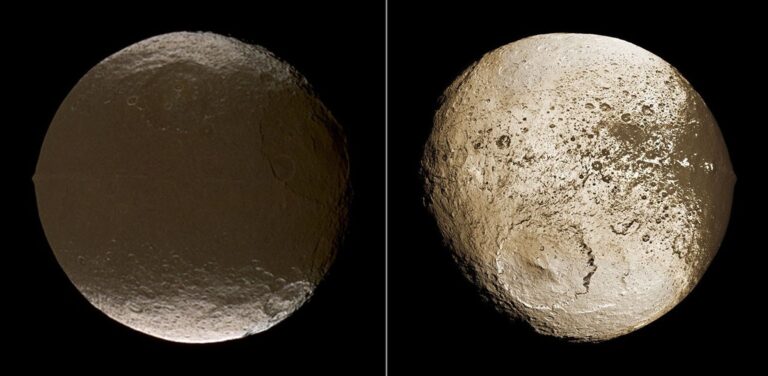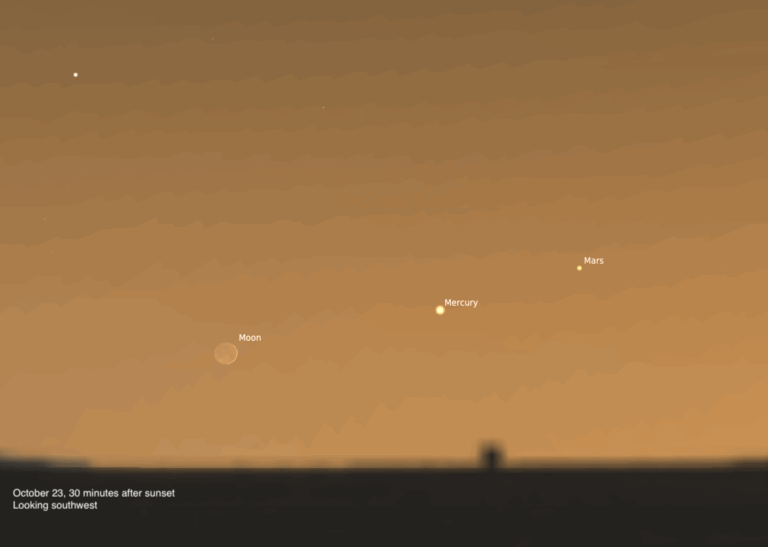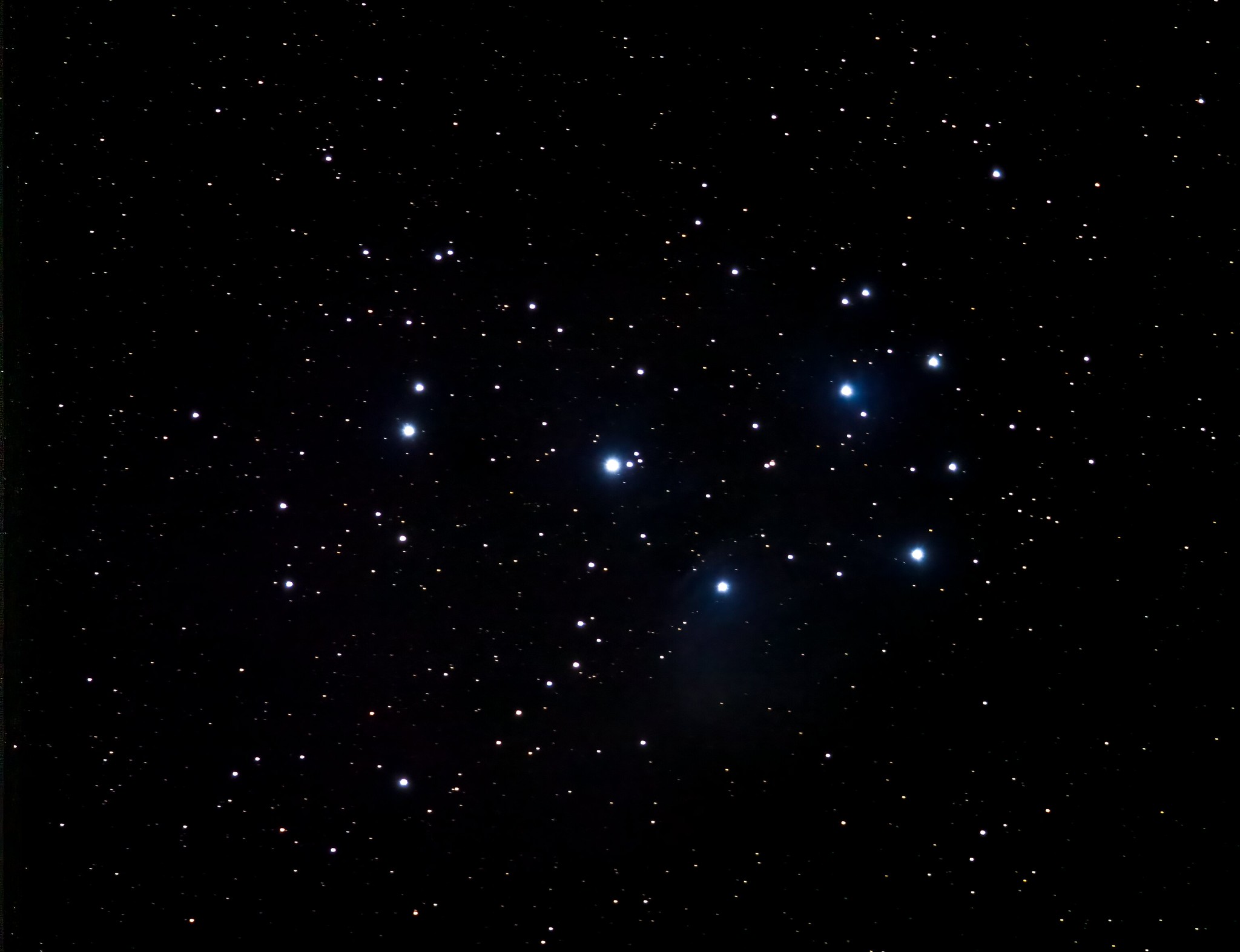
Key Takeaways:
- The Pleiades (M45), a 100-million-year-old open cluster containing approximately 500 stars located 380 light-years from Earth, is observable high in the east by 10 P.M. local daylight time. Concurrently, Uranus, a magnitude 5.6 ice giant, is positioned south of the Pleiades and is best viewed with optical aid.
- On October 19, the Moon and Venus will be visible before dawn.
- October 21 marks the peak of the Orionid meteor shower, expected to yield approximately 20 meteors per hour, with its radiant highest around 5:30 A.M. local daylight time in the constellation Orion; concurrently, the Moon reaches its New phase at 8:25 A.M. EDT.
- Also on October 21, Comet C/2025 A6 (Lemmon) will make its closest approach to Earth at 28.6 million miles (46 million kilometers), appearing at 5th magnitude and visible with optical aid in Boötes approximately 4° above the northeastern horizon by 6 A.M. local daylight time.
Looking for a sky event this week? Check out our full Sky This Week column.
October 19: The Moon and Venus before dawn
By 10 P.M. local daylight time, the Pleiades (M45) is already 30° high in the east. This lovely naked-eye cluster is well known across the world, sparkling in northwestern Taurus. Several of its stars are visible without optical aid — most observers can see five to seven individual stars in the shape of a tiny dipper (although don’t confuse this with the much larger Little Dipper in the north).
Through binoculars or a low-power telescope view (try your finder scope), many more stars begin to appear. The Pleiades stretches about 110’ on the sky — about the width of three and a half Full Moons — and contains some 500 stars, although only about 100 or so are visible under lower magnifications. This open cluster is roughly 100 million years old and is about 380 light-years from Earth.
Currently located south of the Pleiades is the ice giant Uranus. Glowing at magnitude 5.6, the planet is best seen in binoculars or a telescope. From magnitude 2.9 Alcyone (Eta [η] Tauri), simply drop 4.3° south-southeast to land on Uranus. Appearing as a “flat”, grayish star in your optics, the planet’s disk is some 4” wide.
Sunrise: 7:16 A.M.
Sunset: 6:12 P.M.
Moonrise: 6:27 A.M.
Moonset: 5:38 P.M.
Moon Phase: New
*Times for sunrise, sunset, moonrise, and moonset are given in local time from 40° N 90° W. The Moon’s illumination is given at 10 P.M. local time from the same location.
Tomorrow, October 21, is a big day! Before dawn, the Orionid meteor shower peaks as the Moon reaches New phase at 8:25 A.M. EDT. Additionally, Comet C/2025 A6 (Lemmon) passes closest to Earth today, skimming some 28.6 million miles (46 million kilometers) from our planet.
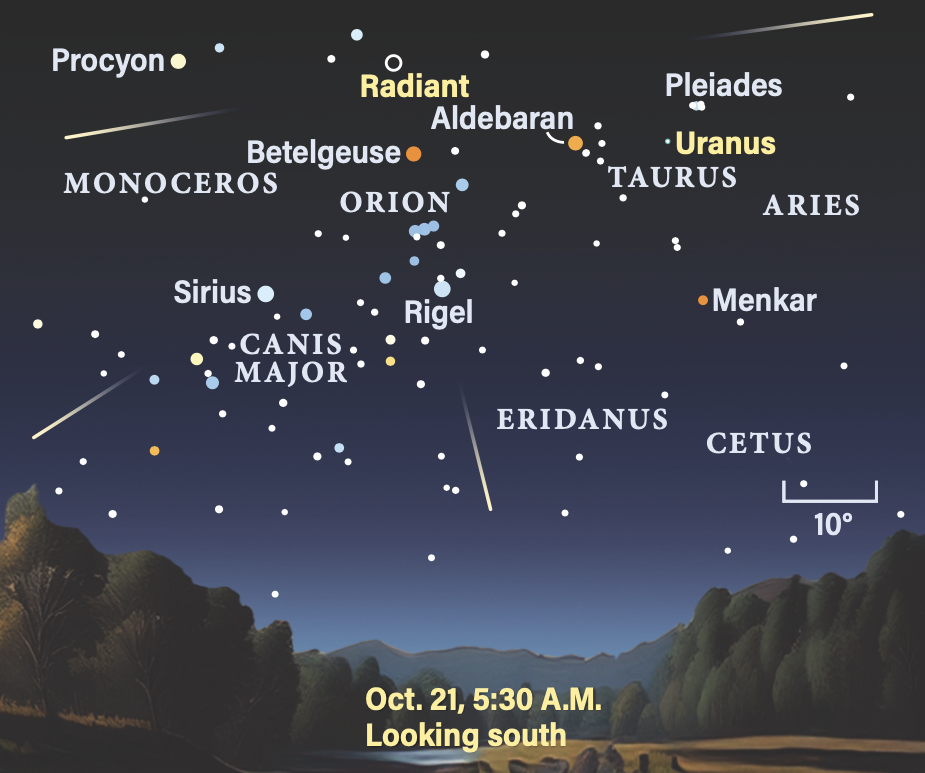
The Orionids are best viewed in the early-morning hours before sunrise. The shower’s radiant, the point from which its meteors appear to emanate, is highest in the sky around 5:30 A.M. local daylight time. Step outside and look south to locate the constellation Orion; the radiant is just above the Hunter’s red giant shoulder, Betelgeuse.
Now, scan the sky to either side of this point — meteors will have the longest trains about 40° away from the radiant. Some 20 meteors per hour are expected this morning, so it’s worth taking a look.
If you’ve also got a clear northeastern horizon, Comet Lemmon is some 4° high by 6 A.M. local daylight time. The comet is now 5th magnitude, readily visible through binoculars, a telescope, and in smartphone images. It’s roughly even in altitude with blazing Venus, visible in Virgo, but Lemmon lies in Boötes, nearly 40° northeast of the planet. This morning the comet is only 1.7° from magnitude 3.6 Rho (ρ) Boötis. Lemmon is rising but the sky will quickly start growing brighter as sunrise approaches.
